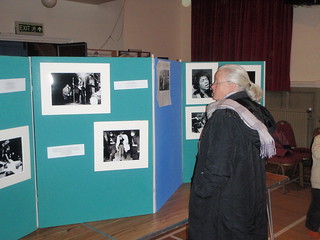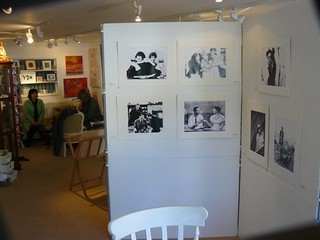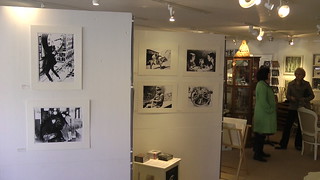
Films as social objects
By their very nature, films elicit comment and reaction. How can you best stimulate this and develop further interaction and participation?
This series of blog pieces has included many ideas for ways to get further comments from our audience, and this one addresses a key aspect of film that hasn’t been explicitly mentioned before: As Nina Simon notes in her book The Participatory Museum[1], which inspired this whole series, objects (including films) work as engines of socially networked experience and conversation. How can we capitalise on this?
Nina Simon observes that we can start my asking ourselves what sorts of films in our current programme already attract the most feedback and discussion? Their qualities may include:
- People may have a personal connection with it
- The film actively attracts attention, eg silent films with live music, ie not just film screening
- Provocative
By understanding how each film checks these boxes enables you better able to promote it and entice more people. Sometimes, though, it is possible to completely misunderstand how the audience will react; we screened Les Demoiselles de Rochefort as part of our light and funny part of the programme, yet it elicited more (negative) comment and discussion and the lowest audience score of any film we have screened in recent years. On the face of it we wouldn’t have described it as “provocative”, yet that is how the audience took it.
As that screening showed, most of the social engagement takes place immediately after the film, when it is really interesting to be floating around the venue to catch dialogue and reactions, and to ask people what they thought. It’s then easy to continue along those lines afterwards via the email list and social media. Indeed, asking questions is easy and essential:
- It encourages the audience to engage personally and deeply in film
- It catalyses dialogue
- It provides feedback to your organisation
One implication of this is that it is important to record the comments too, partly as a record, but also to stimulate further interaction. I try and make a quick note of key bits of feedback at the time, and then post them to the film’s web page and/or our Facebook page. Even better if all the committee and other engaged volunteers you may have can be doing the same.
What else can we do to develop social interactions around our screenings? Earlier posts have included ideas for more explicitly social events such as quizzes, but there’s certainly other engagement possibilities:
IDEA: Devise a themed picture collection (either in the venue or online) to encourage social interaction, eg pictures about when parts of William Wyler’s The Collector were filmed in Forest Row.
We have had such film exhibitions a couple of times, which have been possible thanks to the generosity and help of two local businesses. At the Transition Forest Row screening of the Jimi Hendrix documentary to celebrate the seventieth anniversary of his birth, we had a small exhibition of photos of him from TopFoto, a locally-based picture agency:
An even bigger opportunity was afforded during our comedy film weekend, when TopFoto sourced a wide range of pictures of comedy film stars and scenes, and Ashdown Gallery hosted the exhibition:
Asking people things is the key, and there are many ways to extend it beyond the simple “what did you think of the film?” Even so, it is important to ask open questions, and to listen to the answers. It is also best if your questions relate to the person and are not too abstract; approaching a random member of the audience and probing them with some subtle bit of film theory will probably have them running for the door.
IDEA: Have a guilty pleasures box in your venue and encourage audience to add cards into it over season; films you’re embarrassed to admit you love and why. Anonymously
These sort of social tools need someone to bring people to them and talk about them, so are probably best placed near the refreshments area:
IDEA: Have a vitriol box too. Films you have loathed and why. Collect them over the season and give a prize for the most inventive invective. Include an opt-in box for publishing quotes
There’s not a huge amount of time available before films for doing these things, so you might need to try and get people to do them on the way out as well. Other possibilities might require a bit longer still, so could perhaps be suitable activities for longer film events (for example, if you were screening a long film and had a break in the middle):
IDEA: Get the audience to write about a memorable early film-going experience; or their most memorable film soc event and why. Or ask other questions: What would we lose in a world without film? (or gain?) Use the quotes for promoting the activities of your organisation.
As ever, I feel like I’ve barely scratched the surface of all the implications of the relevant chapter in Nina Simon’s book, so there are plenty of other opportunities that we can devise.
The next and final piece in this blog series will be a short summary, which will also highlight areas I’m aware of that I’ve not really dealt with that much. Do let me know if you have any feedback or comments which I can usefully incorporate. Thank you.
- Nina Simon. The Participatory Museum. 2010. Museum 2.0: Santa Cruz, California. Also available on http://www.participatorymuseum.org/







